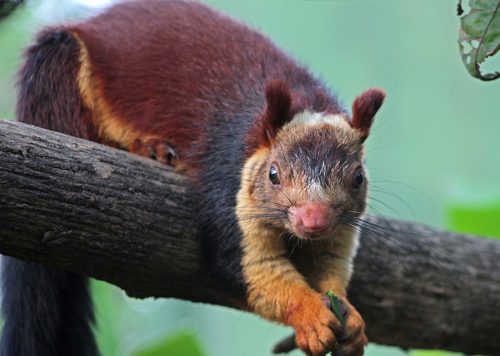Why Kerala’s Move to Celebrate a Common Snake Could Shift How India Thinks About Reptiles
On any given morning walk through a village in Kerala, especially during the monsoon, it’s not uncommon to spot a long, slender snake slithering silently through garden undergrowth or across paddy fields. For most people, the instinct is to freeze, panic, or worse, kill it.
But what if we told you that this very creature, the harmless, glossy Indian rat snake, is one of our most important allies, and could soon become Kerala’s official state reptile?
This quiet shift in status, proposed by Kerala’s Forest Department, is not just symbolic. It’s part of a growing recognition that coexistence with native species is essential to protecting our ecosystem.
Why the Indian rat snake deserves the spotlight
The Indian rat snake is non-venomous and plays a vital role in controlling the population of rodents, frogs, and even invasive species. In agrarian states like Kerala, where rice, banana, and coconut plantations face recurring rodent attacks, this snake quietly performs nature’s pest control — without charge, chemicals, or collateral damage.
It’s a natural solution in a time when India loses over 25 percent of its food grains annually to rodent damage
Yet, despite its ecological role, the rat snake is often killed on sight, mistaken for venomous species like the cobra due to its size and speed. It doesn’t help that it’s commonly spotted in urban areas too, school yards, terrace gardens, compost bins, all places where rats and frogs are abundant.
The power of a name: why a state reptile matters
Assigning a species the status of “state reptile” is more than a label; it’s a conservation tool. According to Kerala’s Principal Chief Conservator of Forests, the proposal to name the Indian rat snake as the state reptile aims to boost awareness, funding, and protection measures under the Wildlife Protection Act.
Just as the Indian elephant is Kerala’s state animal, and the Great Hornbill its state bird, this recognition could:
- Promote research and data collection on the species’ distribution
- Encourage community education programs to reduce snake-related fear
- Support habitat protection and rescue/rehabilitation networks
- Include the rat snake in school curriculums and eco-club initiatives
From fear to familiarity: changing how we see snakes
In India, snakebite deaths are a major public health concern; nearly 58,000 lives are lost every year, as per a study by The Lancet (2020). But more than 90 percent of the 270-plus snake species in India are non-venomous, and many of these, like the rat snake, are essential to our ecological balance.
 Rat snakes in Kerala are non-venomous and often mistaken for cobras due to their size and behaviour. Picture source: IAS gyan
Rat snakes in Kerala are non-venomous and often mistaken for cobras due to their size and behaviour. Picture source: IAS gyan
Education is key. Organizations like the Madras Crocodile Bank Trust, Kerala Forest Research Institute, and local snake rescue groups in Kerala are already working on awareness drives, rescue helplines, and bite prevention training for farmers and schools. Declaring the rat snake as a state reptile adds credibility and visibility to these efforts.
What you can do
This move is not just about adding one more species to the record book. The initiative is all about awareness and highlighting the importance of human-reptile coexistence.
- Don’t kill snakes you can’t identify. Call a local rescue group or forest helpline.
- Grow native plants and reduce rodent attractants — rat snakes follow the food trail.
- Educate your children and neighbours about the difference between venomous and non-venomous snakes.
- Support school eco-clubs that promote reptile literacy and safe coexistence.
A quick guide to recognising the rat snake
Colour: Usually olive-brown, yellowish, or black with a white underside
Behaviour: Very fast movers, climb trees and walls easily
Head: Narrow, not as wide as venomous snakes
Eyes: Round pupils (many venomous snakes have vertical slits)
Other states with similar initiatives
Tamil Nadu’s Yeoman butterfly: In Tamil Nadu, the Tamil Yeoman butterfly (Cirrochroa thais) was officially declared the state butterfly on June 26, 2019. This striking species, found abundantly across the Western Ghats, was chosen for its ecological significance and cultural resonance, earning its Tamil name “Maravan” (warrior).
 Tamil Nadu declared Tamil Yeoman as its state butterfly to symbolise its rich natural and cultural heritage. Picture source: drishtiias.com
Tamil Nadu declared Tamil Yeoman as its state butterfly to symbolise its rich natural and cultural heritage. Picture source: drishtiias.com
Its state symbol status has sparked statewide conservation campaigns and citizen science efforts, including school-led butterfly monitoring and public awareness drives that highlight the importance of butterflies and their habitats
Maharashtra’s giant squirrel: In Maharashtra, the majestic Indian giant squirrel (Ratufa indica), affectionately known as “Shekru,” is the state animal, and its status has had a real impact. Within the Bhimashankar Wildlife Sanctuary, part of the Western Ghats biodiversity hotspot, the number of giant squirrel nests skyrocketed from around 11,900 to over 22,000 in just one year, thanks to enhanced forest protection and community-led habitat monitoring.
 The Indian giant squirrel is one of the largest squirrels, with a head–and–body length of 25–50 cm. Image credits: Rajiv Gandhi Biological Park and Wildlife Conservation Centre
The Indian giant squirrel is one of the largest squirrels, with a head–and–body length of 25–50 cm. Image credits: Rajiv Gandhi Biological Park and Wildlife Conservation Centre
Additionally, breeding programs at the Rajiv Gandhi Zoological Park in Pune, made possible by the squirrel’s state symbol recognition, have successfully produced healthy captive juveniles. These efforts, combining in-situ and ex-situ conservation, highlight how official recognition can translate into concrete ecological outcomes and revitalised habitat preservation.
Edited by Saumya Singh
News